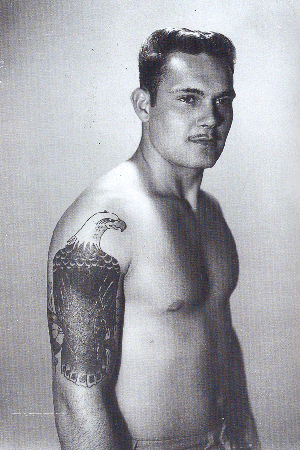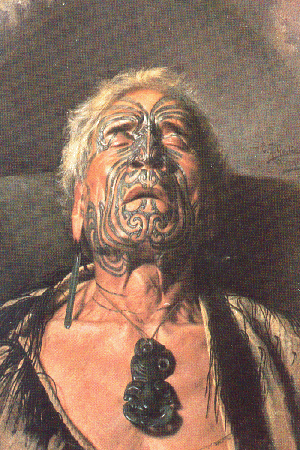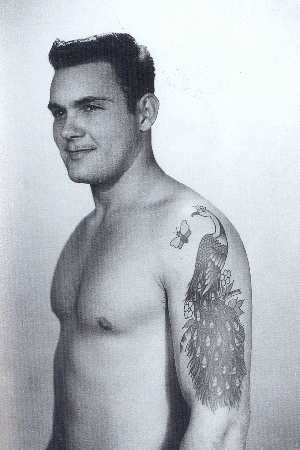summary and research proposal
 |
 |
 |
The twelve tattoos selected for analysis have opened doors to allow for critical thinking about my chosen object. It is immediately apparent that the incredibly wide variety of tattoo styles, spanning literally hundreds and even thousands of years, makes the study of 'the tattoo' (i.e as a singular object) nearly impossible. Despite a variety of methods, however, the act of tattooing is indeed singular and universal. The act of placing pigments permanently under the skin is now (as it has been for a very very long time) a universal practice.
Why people get tattoos is a complex question with a multitude of complex answers. As can be seen from the only twelve examples used here for analysis, tattoos are inked for reasons of fashion, aesthetic, art, love, memory, sex, nationalism, patriotism, personal/cultural/gender identity, cultural inclusion (and cultural exclusion), status, faith, tribute and to 'make a statement.'
What, exactly, does a tattoo state? Is it a sign or a referent for something else? Is it a symbol for those 'in the know?' Is it simply body adornment or beautification? Or perhaps, mutilation? Is the tattoo a personalization of the self? Of the human body? Is a tattoo any different than, say, a hat? A style of clothes? A haircut? Is a tattoo meant for the wearer or for the perceiver? Would a tattoo have any meaning if no one ever saw it?
It is clear from the models discussed within that semiotics are key to understanding some of the questions asked above. Macqet's 'Objects as instruments, objects as signs' is the obvious starting point. Tattoos are instruments and signs. They carry, project and supply meaning. By necessary extension, the human body, upon which tattoos are permanently inked, is also an instrument and sign. Tattoos clearly mean something, to both the wearer and perceiver. The act of getting tattooed is cultural and highly ritualized; it is a rite of passage into a culturally inclusive group. What this group is, however, depends to a certain degree on the tattoo itself. What meanings tattoos supply or project are entirely culturally dependent. A biker tattoo, for example, may project 'hatred', 'power', 'fear' or 'death' to society at large. To the tattooed biker community, the symbols have entirely different meanings. They represent cultural identity and inclusion and the acceptance into a group through rite of passage. In this respect tattoos seem similar to other visual meaning suppliers, such as dress, hairstyle, body ornamentation, etc. The permanence of tattoos and the social stigma to which they are attached, however, differentiates them from clothing and hairstyle. The fact that many tattoos are located in easily covered areas, shown only at the discretion of the wearer, speaks volumes. They are 'secret symbols' that not all are meant to see, or at least understand. The 'true' meaning as it relates to the wearer is certainly not necessarily that which is publicly perceived.
(An aside: as one with tattoos, I can attest to instant brother/sisterhood between the tattooed. It is a smile, a nod, an "I'll show you mine if you'll show me yours" mentality of connectedness).
Following this line of thought, I see my research next term pursuing 20th century Western European/North American tattoos as signifiers and meaning suppliers in the creation of cultural identity. For the most part (although this has changed dramatically since the 1990s), the cultural identities I speak of are marginalized and well outside the mainstream, be they bikers, punks, gay/lesbians, skin heads, etc. It is interesting (and I would very much like to focus my research here) that tattoo designs and styles used by many of these groups are similar to and originate from very different cultural (and historical) contexts altogether. The 'diva' tattoo worn by the lesbian (Tattoo 11) is strikingly similar to many biker tattoos, which are similar again to many early-20th century male-only army tattoos (Tattoo 5, for example). Tribal tattoos today bear remarkable likeness to 18th and 19th century Maori tattoos. The key here is that the meanings inherent in and supplied by each tattoo are vastly different. It is interesting to note that traditional Japanese tattoos are clearly works of art on a human canvas, whereas the 'mainstreaming' in North America and Europe of tattoos over the last 10 years has turned them into consumer goods. This change in the cultural meaning of a tattoo as a sign, both within and outside a given cultural context, is certainly worth investigating.
A tentative thesis direction may be to study and understand the expropriation of a culturally inclusive tattoo style by another (often marginalized) group or culture and the subsequent application of new meanings applied to that style or design. I will begin by analyzing more closely the tattoos from the marginalized groups, specifically punks, gays and lesbians and women.
-Images: artist unknown, c. 1960s (Schiffmacher 1996:336) and Te Aho o Te Rangi Wharepu of Ngati Mahuta, painted by Charles Goldie, 1907 (Simmons 1986:168)-